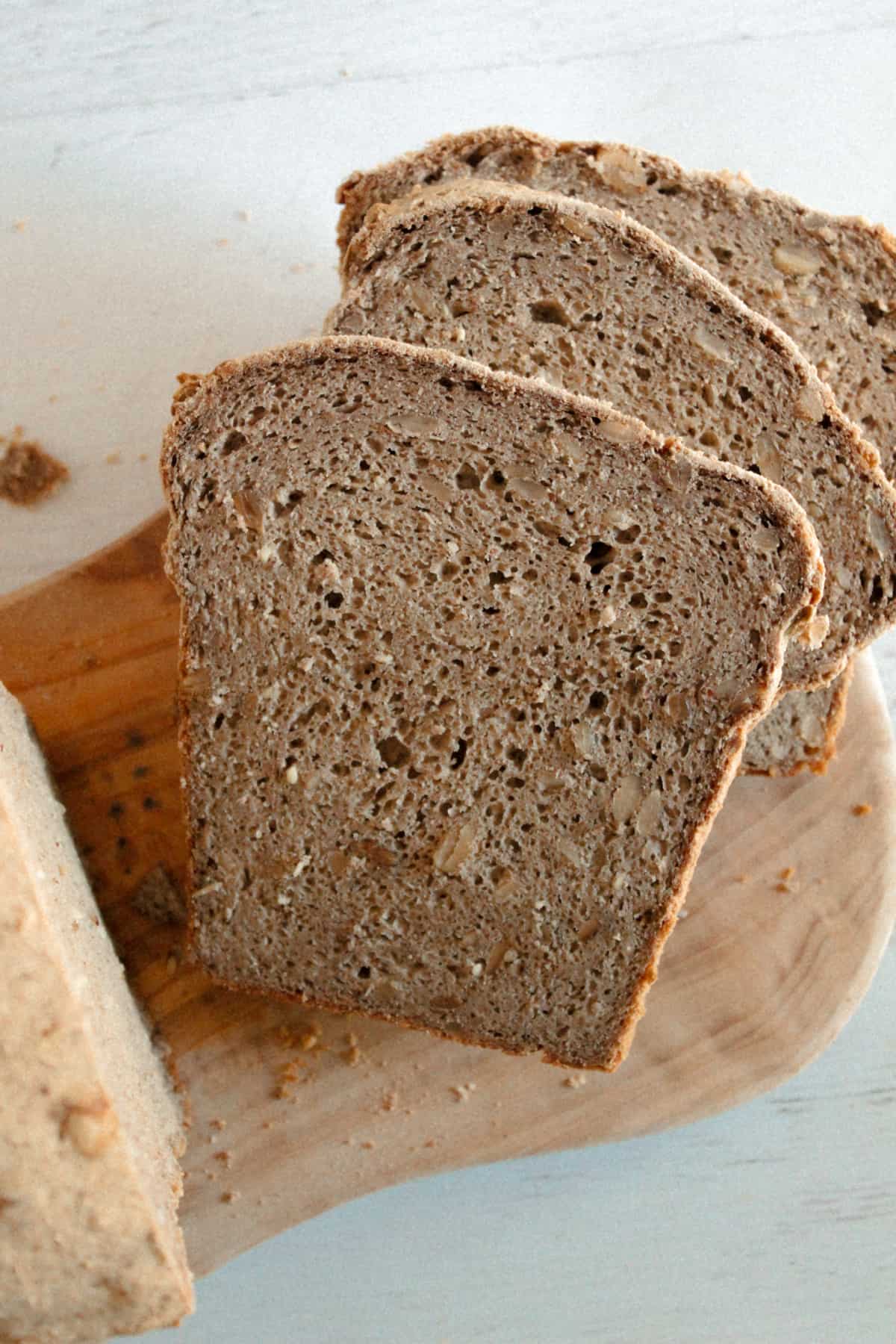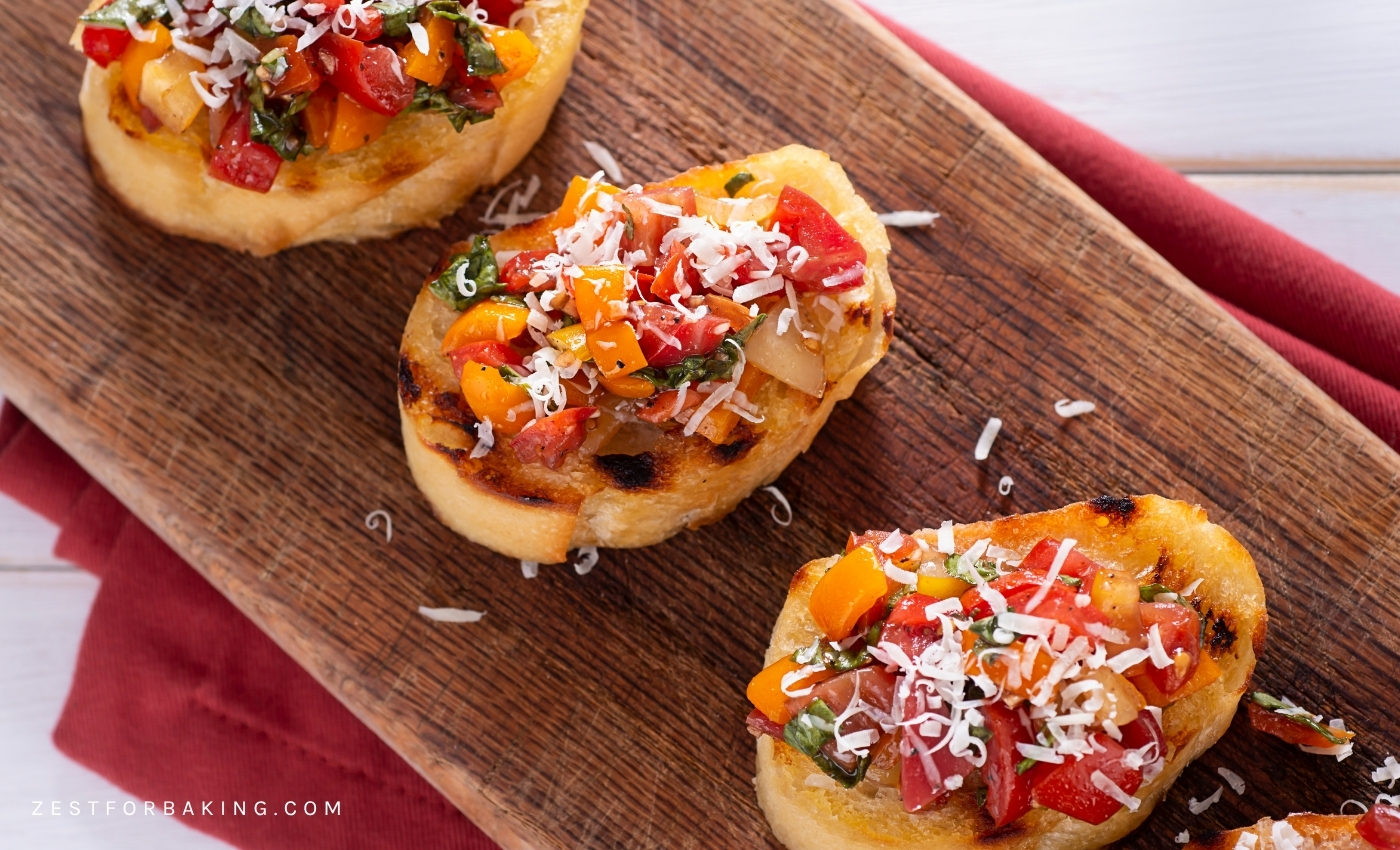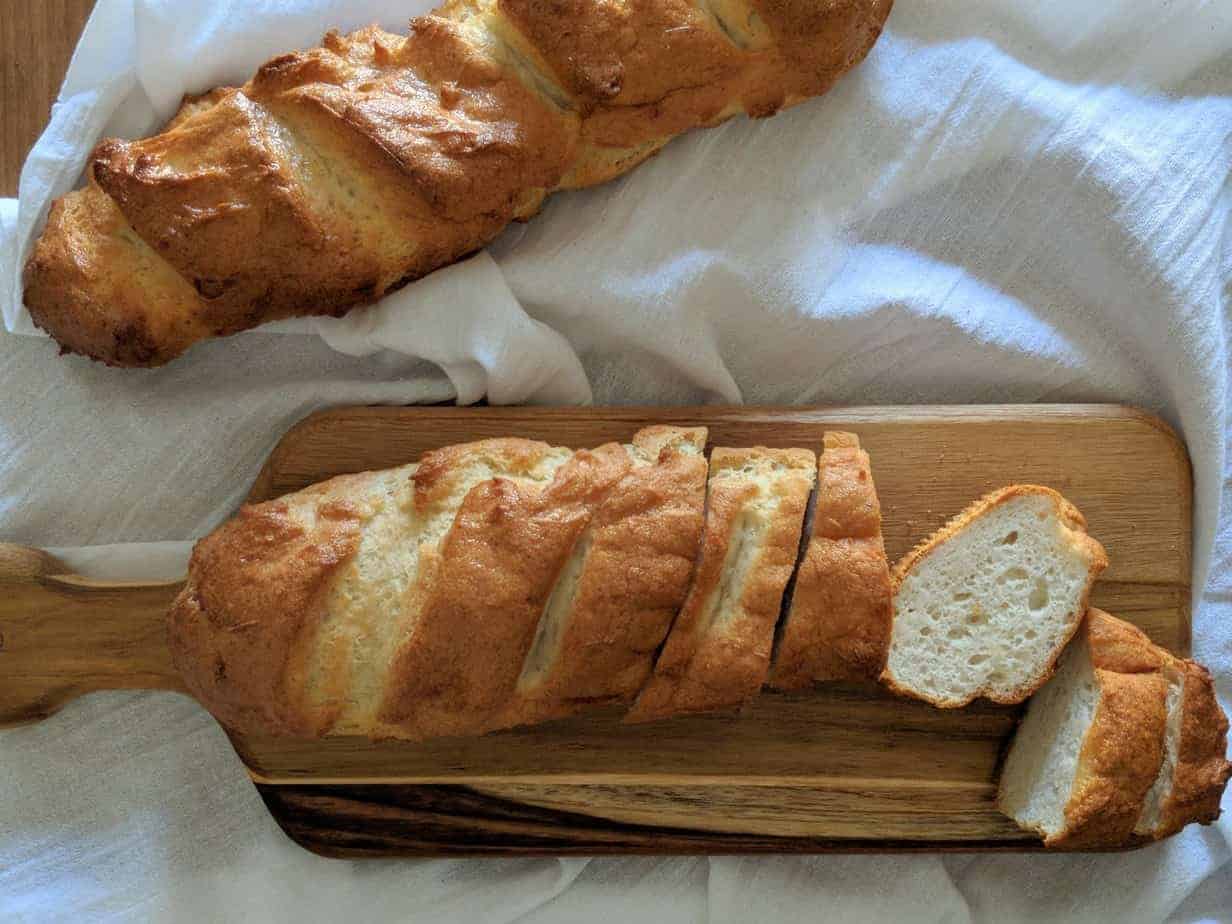Soft Gluten Free Potato Bread Recipe: Dairy-Free
The crusty exterior and soft interior of this gluten free potato bread recipe will have everyone reaching for seconds! It’s easy to mix together, rises beautifully and bakes up nice and golden. Sliced thick or thin, slices of this homemade bread will quickly become a favorite!
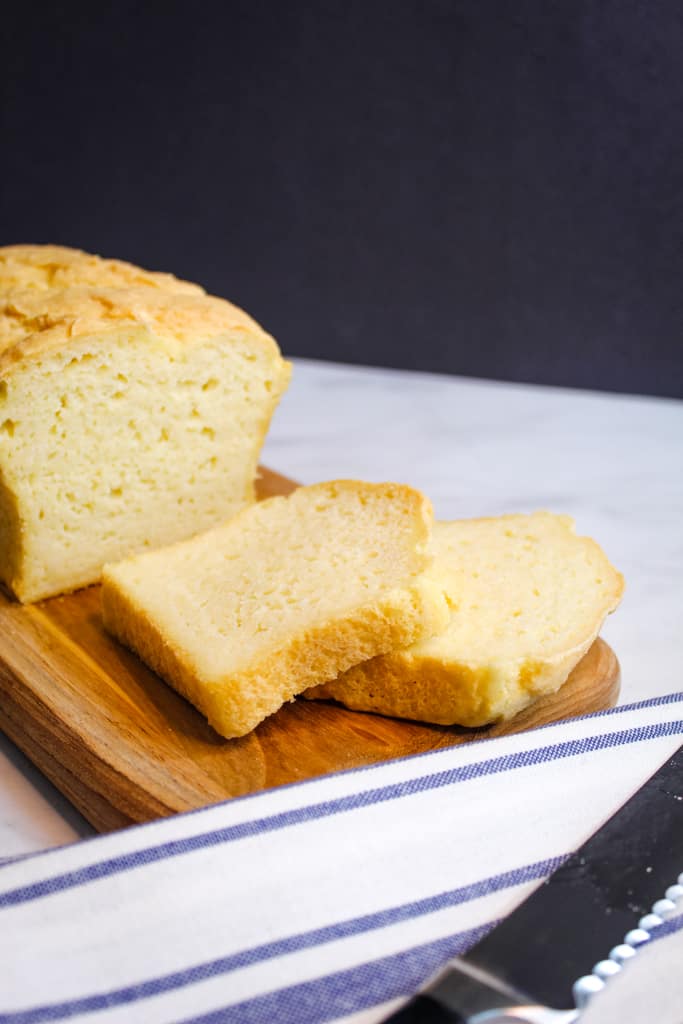
Looking for more gluten free recipes for traditional breads? Check out this gluten free buckwheat bread, these gluten free breadsticks and this gluten free oat bread.
Table of Contents
Gluten Free Potato Bread at a Glance
No kneading, no complicated ingredients, just reliable, delicious potato bread. I describe this recipe as a cross between a dense, hearty bread and an airy bread – from one extreme to the other right? Well, it’s all about the moisture content. Potato bread is typically moister than other breads (due to the mashed potatoes), so the end result is an airy textured bread that’s still hearty enough to hold together.
This bread is unique in that it uses potato flakes instead of whole potatoes, which makes it seriously easy as there’s no need to cook potatoes. If you have real potatoes in mind for your bread though, these gluten free potato buns are a perfect fit!
By the way, one of my favorite ways to serve this gluten-free potato bread is with this dipping sauce. It’s like a little taste of heaven in every dip!
Ingredients & Substitutions in Gluten-Free Potato Bread
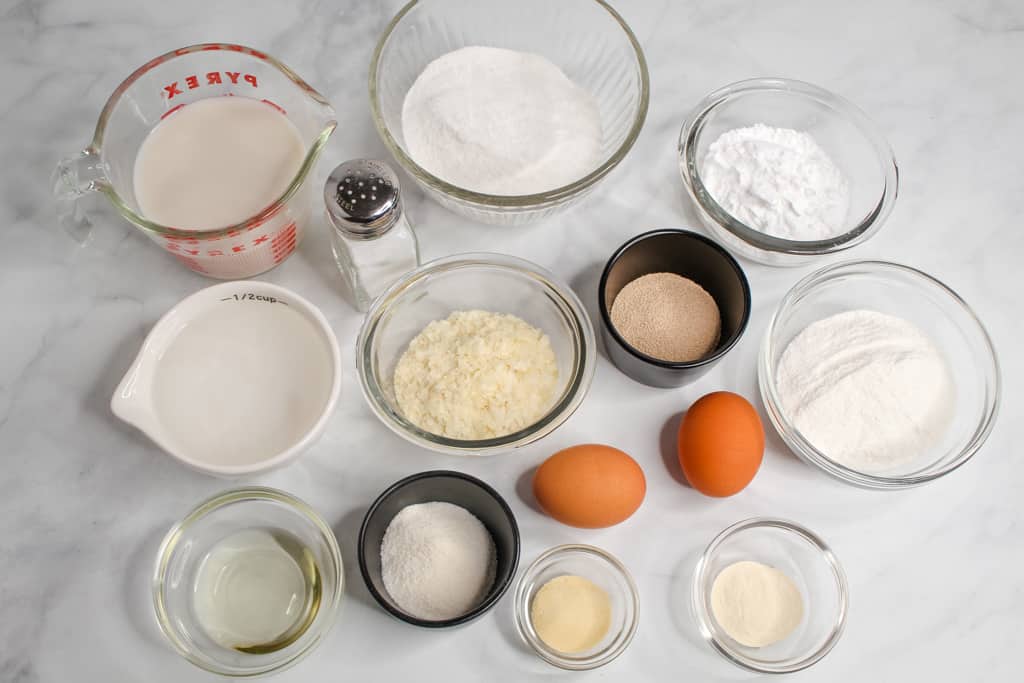
The ingredient list for this potato bread recipe includes:
Dry Ingredients:
- White Rice Flour – Rice flour is the best balance with the sweet rice flour and potato starch. Other gluten-free flours like almond flour, coconut flour, oat flour or even a gluten free flour blend are not one-for-one substitutes. Brown rice flour can be substituted however.
- Sweet Rice Flour – Also called glutinous flour, this is not the same as rice flour.
- Gelatin – If you’d like to substitute the gelatin, reference this post about other thickener options.
- Potato Starch – Make sure to use potato starch, not potato flour. As a substitute for potato starch, use tapioca starch (also called tapioca flour) or cornstarch.
- Dry Potato Flakes – These are normally sold in a box or bag, and stored at room temperature. Sweet potatoes or even whole, white potatoes have not been tested.
- Swerve or Granulated Sugar – Use either Swerve granular sweetener or regular granulated sugar.
- Salt – The salt may be cut down or omitted.
- Xanthan Gum – The xanthan gum functions as a binder, if you’d like to substitute the xanthan gum, reference these xanthan gum substitutes.
- Instant Yeast – Also called fast rise or rapid rise yeast. Active dry yeast may be used.
Note about Sweet Potato Flour
Several readers have asked about using this sweet potato flour in the recipe. I have not tested this in the recipe as it has been quite pricey every time I look for it, so it’s not a flour I have experience with using in this potato bread recipe.
Wet Ingredients:
- Water – There is no substitute for the water.
- Vegetable Oil – As a substitute for the oil, melted coconut oil, olive oil (not extra virgin), or melted vegan butter can be used.
- Eggs – Whole eggs are used in the recipe, flax eggs or chia eggs may be substituted as outlined in this post about egg substitutes or you may also use 3 egg whites instead of the whole eggs.
- Dairy Free Milk – Almond milk, coconut milk or oat milk may be used. Regular dairy whole milk may be substituted.
Exact measurements and instructions for making this gluten free potato bread are in the recipe card below.
How to Make Gluten Free Potato Bread
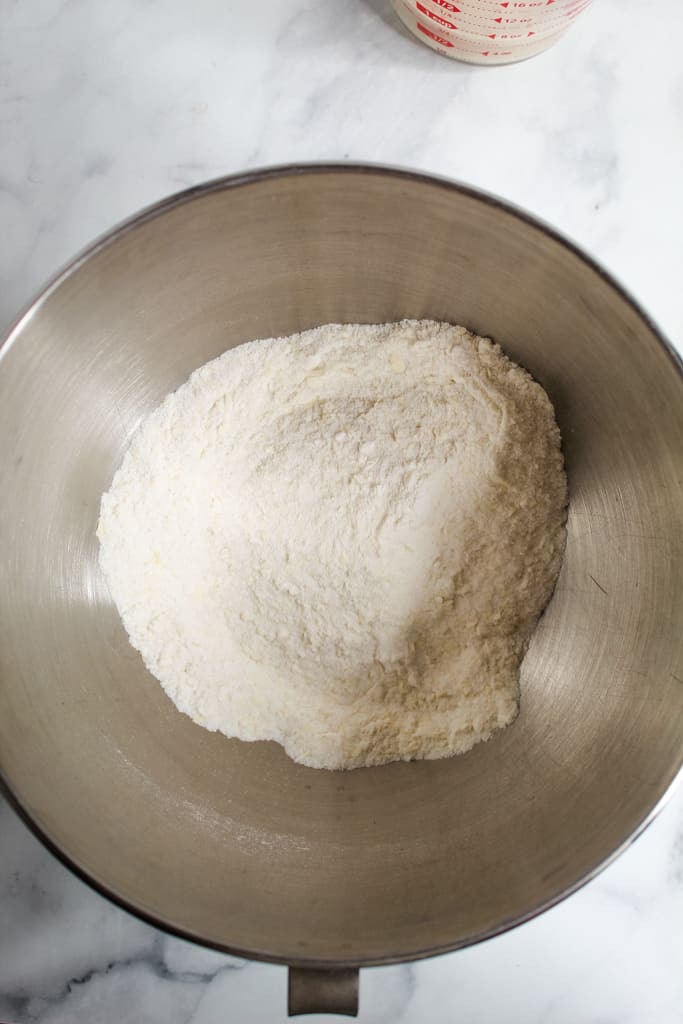
Step One: Mix the dry ingredients in the bowl of a stand mixer.
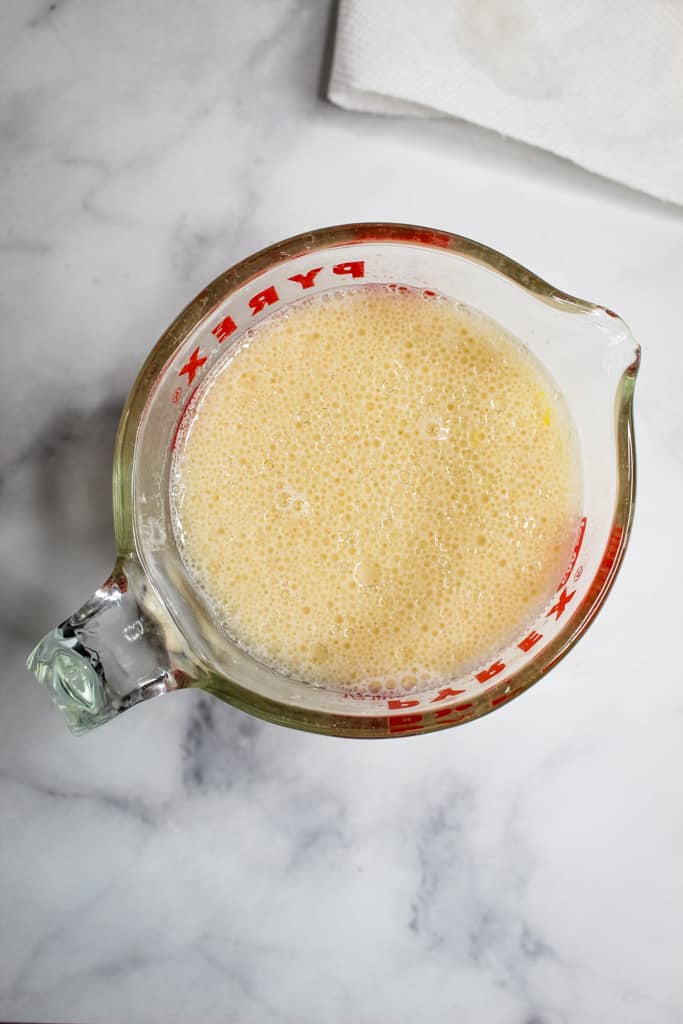
Step Two: Mix the wet ingredients in a small bowl or measuring cup.
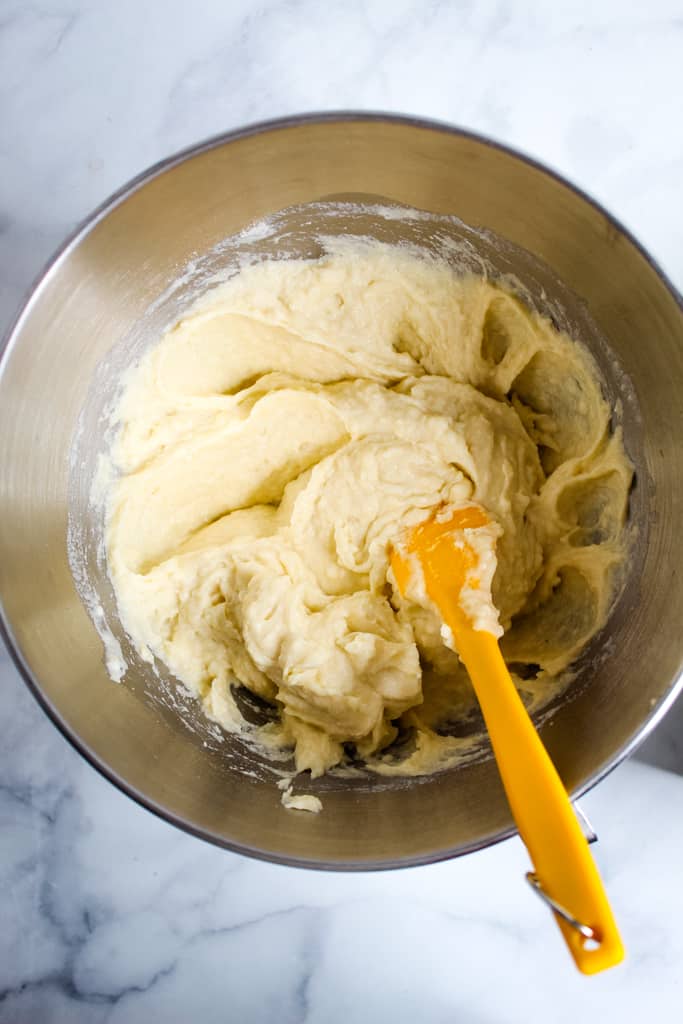
Step Three: Add the wet ingredients to the dry ingredients in the bowl and mix with the paddle attachment on low speed for 30 seconds. Turn mixer to medium speed and mix for 3 minutes.
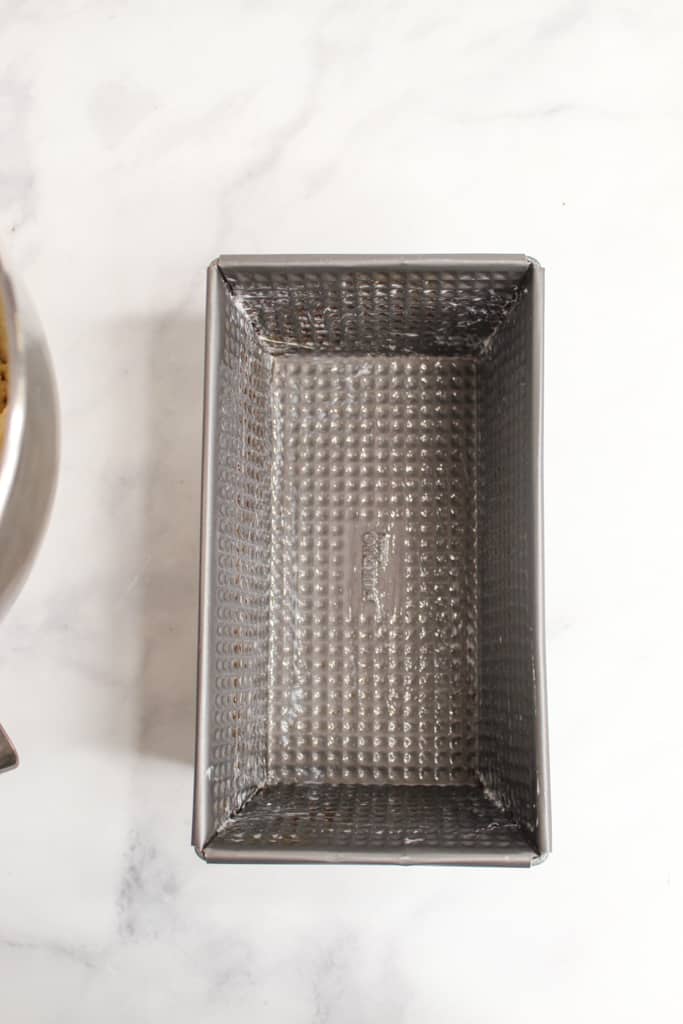
Step Four: Prepare an 8″x4.5″ standard loaf pan by buttering well with vegan butter. If you’d rather skip the vegan butter and use parchment paper to line the pan, that is an option as well.
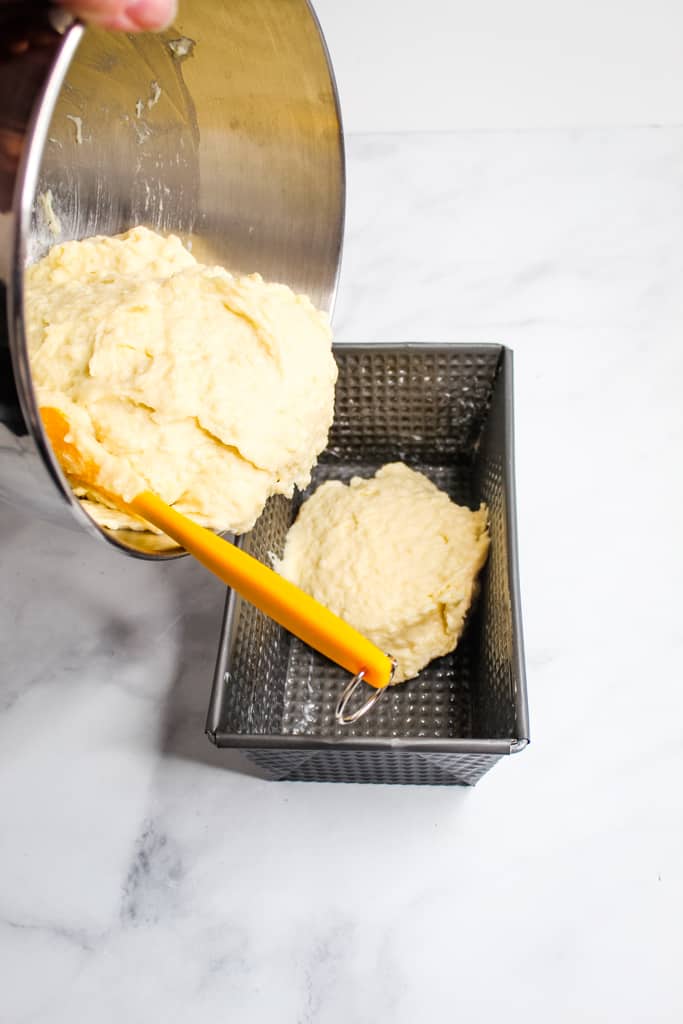
Step Five: Scrape batter into the prepared loaf pan. Use a rubber spatula to smooth the top of the bread dough.
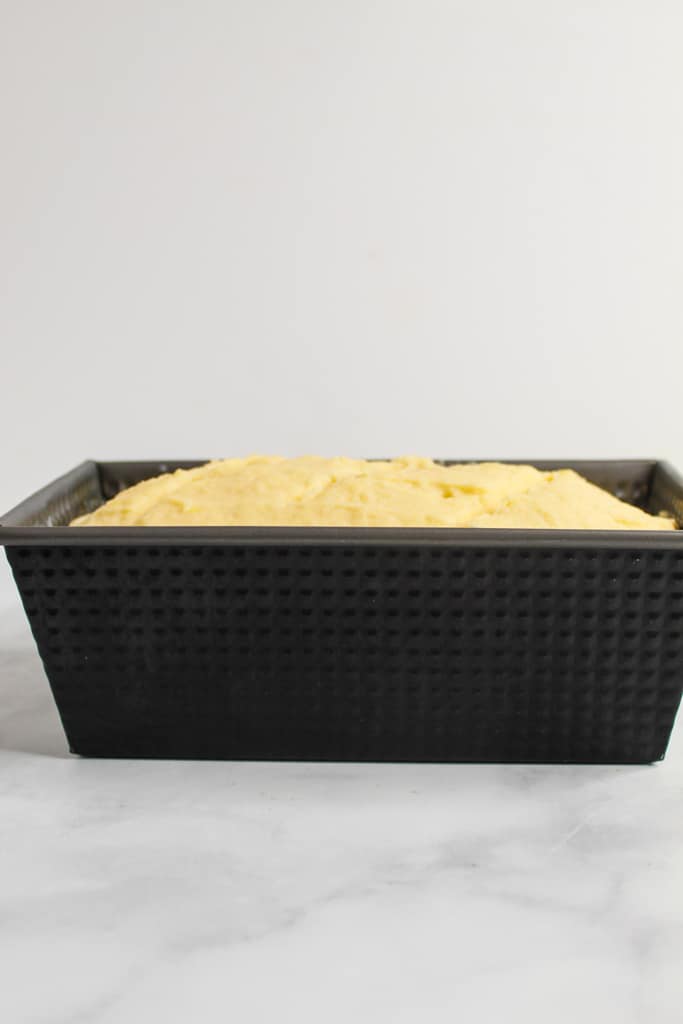
Step Six: Allow bread to rise in a warm place until it hits the top of the pan. If the room temperature is cooler, you may need to cover the pan lightly with a piece of plastic wrap (spray it with cooking spray before placing over the pan otherwise it will stick to the top of the risen loaf).
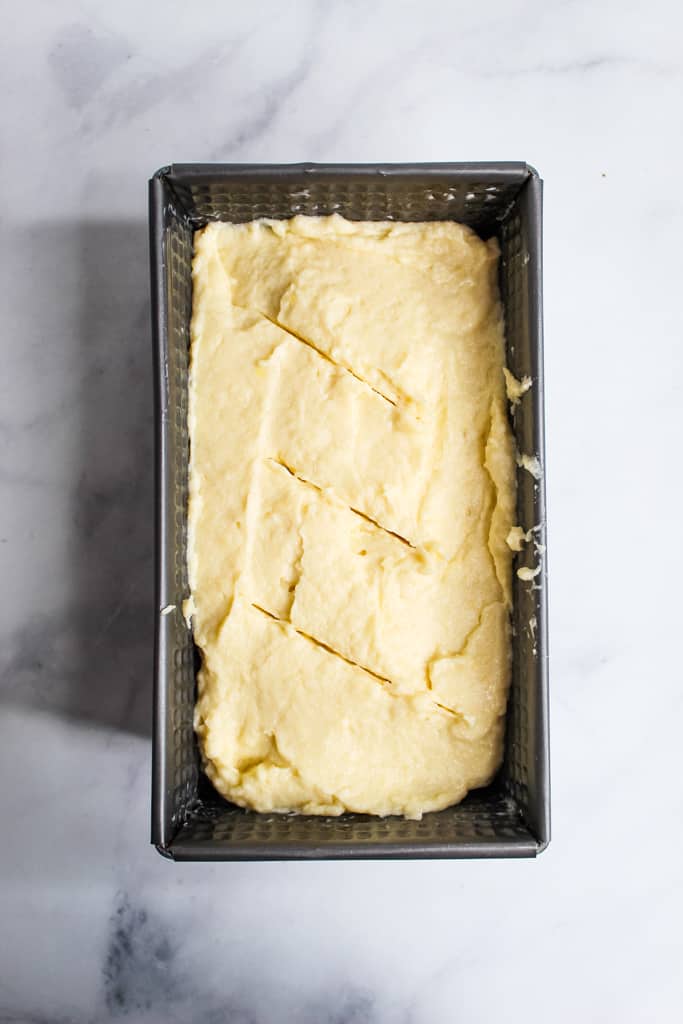
Step Seven: After rising, make 3 diagonal slices before placing in the oven to bake. Bake the bread for about 50 minutes until the top is golden brown or until an instant read thermometer registers between 205-210F.
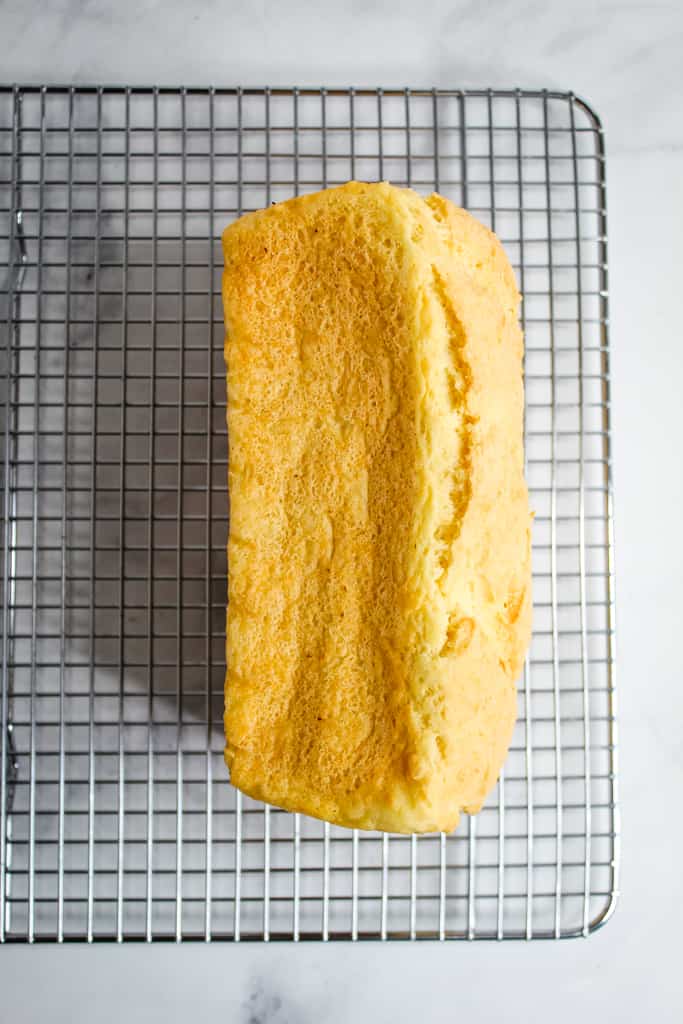
Step Eight: After baking, remove the bread from the pan and place on its side to cool completely. Flip to the other side after 20 minutes. Cool the bread completely before slicing.
How to Store Potato Bread
Storing this gluten free potato bread just requires two things: some wax paper and a freezer safe plastic bag. If you’re storing it for longer than 1 day, freezing it is the best way to preserve the quality and the taste.
I’d recommend slicing it first before freezing since a loaf of frozen bread is nearly impossible to slice.
Use a high quality, serrated knife and slice the entire loaf, placing wax paper in between each slice. Place the whole loaf in an airtight container (a large plastic bag works great), seal it well and place it in the freezer. For best results, enjoy it within a month.
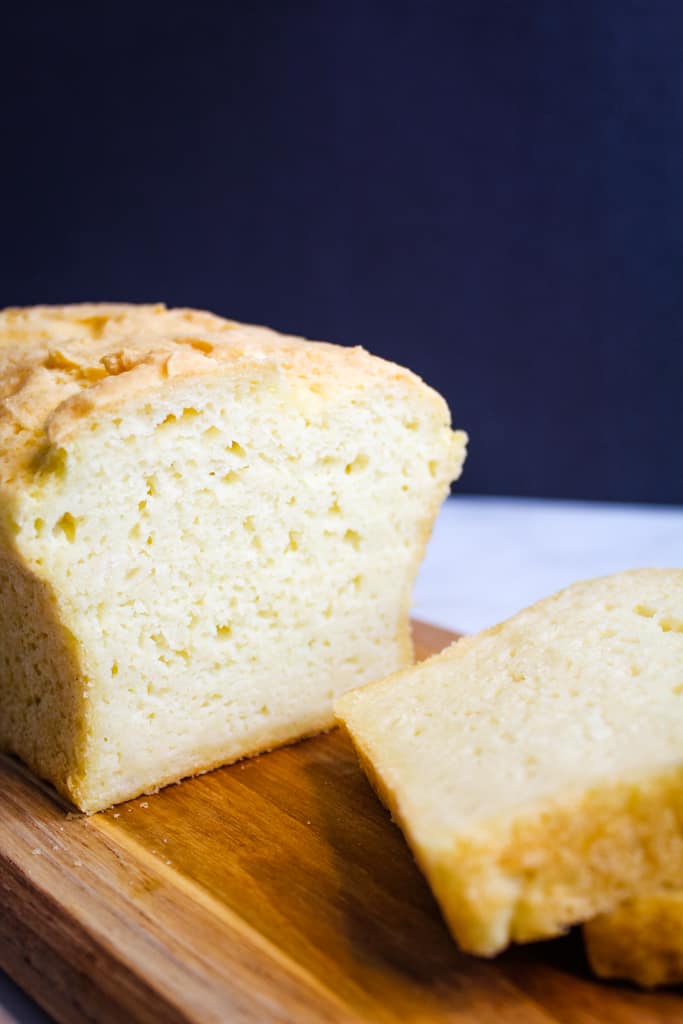
Pro Tips for Making Gluten Free Potato Bread
Room Temperature Ingredients
From the eggs to the flours, all ingredients need to be at least at room temperature (the water for the yeast should be a bit warmer – 110 F). If you store your flours in the refrigerator, just bring them out and let them sit while getting everything else ready.
Tip: Eggs can be quickly brought to room temperature by floating them in a cup of warm water for a few minutes.
Checking for Doneness
For best results, use an instant read thermometer to determine when the bread is done baking. Baking time can vary so the best way to tell if the bread is done is if the thermometer registers between 205-210F.
Cooling Yeast Breads
Yeast breads can be very fickle. A tall, nicely baked loaf can all of a sudden start to sink or worse, collapse all together once it’s taken out of the pan. Let’s make sure that doesn’t happen to yours!
Pro tip: Remove the bread from the oven like usual. Place it on a wire rack to cool in the pan for about 10 minutes. Now, here’s the cooling tip… when you remove it from the pan, don’t just sit it down and walk away to finish cooling. Lay the bread on its side to cool for 15 -20 minutes. Then flip it over and cool for another 15 – 20 minutes.
This way the bread is balanced on all side for forming that nice tall crown. Remember, gluten free breads need that cool down period. It’s like a second bake time. And it’s crucial for the formation of the loaf.
Helpful Tools
These baking tools are helpful to have when making this yeast bread:
Potato Bread FAQs
Some potato bread contain gluten because of the wheat flour in the recipe. This recipe is gluten free because it uses gluten free flours and starches.
Potato bread can be healthier than others, it just depends on the ingredients. This recipe is lower in sugar and fat than others.
Potato flakes perform better in this recipe than mashed potatoes The mashed potatoes tend to make the bread too moist.
Once you pour the batter into the pan, it will be about ¾ of the way full. Place the pan into a draft-free spot to rise for an hour. After an hour it will have risen to just over the top of the pan. Keep in mind, the moisture content is higher in this bread, so it may not rise as much as other breads like this cinnamon raisin bread machine bread.
Did you make and love this recipe? Give it your review and ![]() rating below! And make sure to follow me on Instagram, Pinterest and Facebook too!
rating below! And make sure to follow me on Instagram, Pinterest and Facebook too!
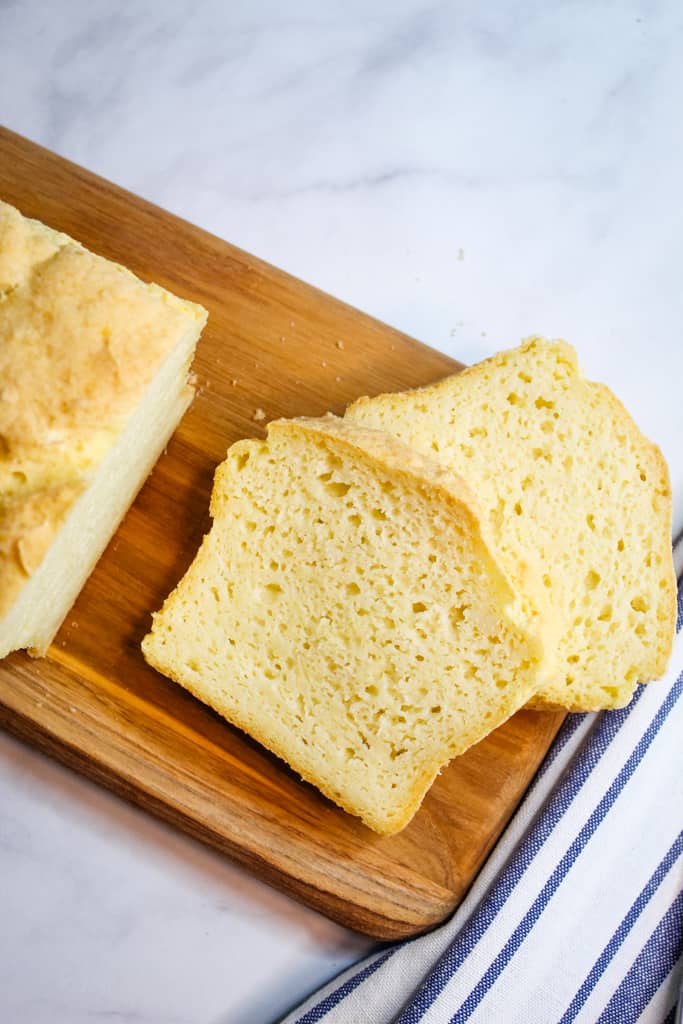
Soft Gluten Free Potato Bread Recipe: Dairy Free
Ingredients
Equipment
Method
- Mix the dry ingredients together on medium speed for 30 seconds in the bowl of a stand mixer.
- In a 2 cup measuring cup or small bowl, mix the wet ingredients together.
- With the mixer on low, gradually add the wet ingredients to the dry ingredients in the stand mixer. Mix for 3 minutes on medium, scraping the bowl down as needed. The mixture will resemble thick cake batter.
- Using vegan butter, or dairy butter, grease an 8” x 4.5” loaf pan.
- Scrape the batter into the pan and smooth the top.
- Place the pan in a warm place, free from drafts to rise for 1 hour. A toaster oven or unwarmed oven works great. The dough should rise to the top of the pan.
- Preheat oven to 375 F.
- With a sharp knife, make 3 diagonal slices across the top.
- When oven is fully preheated, bake the risen loaf 50 minutes until bread is browned on top and an instant-read thermometer registers between 205-210F.
- Remove bread from the oven and allow to cool for 10 minutes on a wire rack, in the pan.
- Remove from the pan and cool the bread on one side for 20 minutes. Then flip and let it cool for another 20 minutes on the other side.
- Once the bread has fully cooled, slice and serve.
Video
Notes
- Make sure all ingredients are at room temperature.
- Measure ingredients by weight where weight is given.
- Mix the dry ingredients and the wet ingredients separately. Then mix together until the batter is light and fluffy.
- Scrape the batter into the pan and let it rise until the bread just reaches the top of the pan.
- After baking, cool the bread by laying it on its side until completely cool.
Originally published 3/18/2015. Updated 2/26/2020 with new pictures and better directions. And then again on 9/10/2023.
Check out these delicious gluten free bread recipes next:
